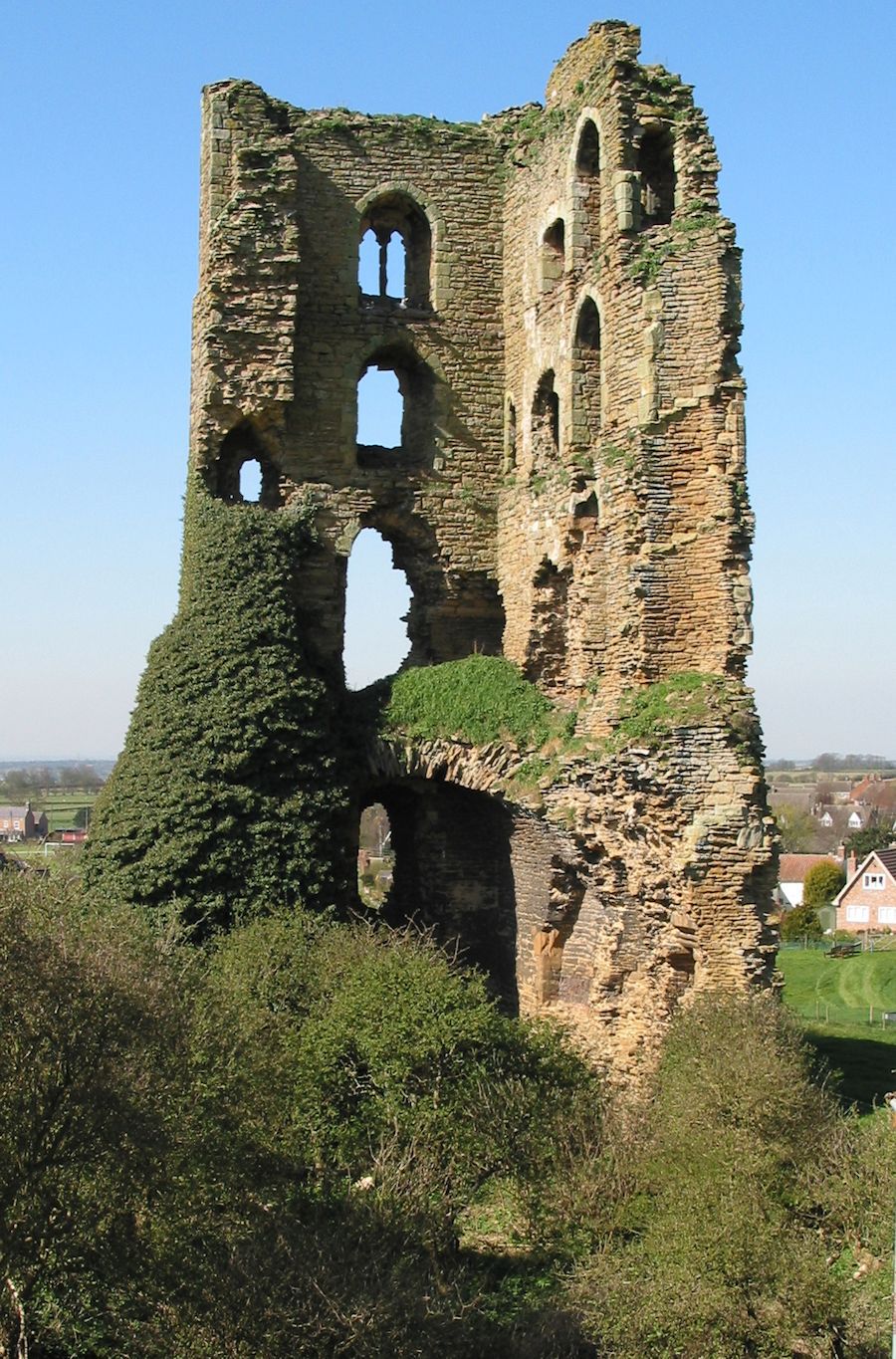SHERIFF HUTTON HISTORY
The village of Sheriff Hutton possesses a unique character with a long history. It is situated on a long low East – West ridge between the Vale of York and the Howardian Hills. ‘Few villages touch national history as closely as Sheriff Hutton, still a real village despite recent growth. Castle ruins dominate the scene with awesome grandeur and there is fine countryside never far away.’
The low ridge gave a dry site and had at least one spring nearby. It was a good place for a settlement and flint tools dating back to about 6000BC have been found. Roman finds in the area and crop marks indicate settlement in Roman times.
Sheriff Hutton has two castles. The first is a Norman motte and bailey structure of which only the mounds remain. It was built by Ansketil de Bulmer on land given to him by William the Conqueror. Hutton stems from the Old English hoh (a projecting piece of land) and tun (a farmstead) while the Sheriff prefix stems from the association with the Bulmer family, Bertram de Bulmer being sheriff of York in 1115.
In 1331 the Neville family received overlordship of Sheriff Hutton and in 1382 John Neville started to build a second castle on a new site in the village. It was completed in 1398. The Neville’s were largely responsible for the growth of the village that we see today. Richard Duke of Gloucester (the future Richard III) was placed in the household of Richard Neville. It is likely that Richard III visited Sheriff Hutton several times and in 1485 he created The Council of the North which used to meet in York or Sheriff Hutton. From 1547 the castle seems to have been occupied only spasmodically by the Council and declined since then.
South of the castle is Sheriff Hutton Park. The house was built by Sir Arthur Ingram in 1621, Sir Arthurs’s main house being Temple Newsom near Leeds. In 1637 the hall went to his third son Sir Thomas who removed large quantities of stone from the castle to build stables and a brewhouse (the Rangers House). Thus began the final decline of the castle. In the reign of Charles II the house was sold to the Thompson family. Originally the house was Jacobean in its architecture. This house still survives but about one foot inside the present Queen Anne exterior built in 1732.
The earliest clear reference to the existence of a church is a gift to St Mary’s Abbey York by Sir Nigel Fossard, who died in 1120, of the Church of St Helen and the Holy Cross. There is a small window above the west door that may pre-date 1100. The Norman building of magnesian limestone ashlar, thought to be re-used blocks from York's Roman walls, comprise the tower, nave and chancel, all later extended when the four chantry chapels were built in the C15th for the manor-holding families of the Nevilles, Gowers, Wythams and Dacres.
There are many references to the Plantagenet connections with Sheriff Hutton Castle including the Sun in Splendour of Edward IV and Neville and Dacre shields in the stained glass, much of it damaged at the Reformation. There is a tomb of Sir Edmund Thweng, who died at the Battle of Stirling in 1344 and the alabaster tomb of Edward – Prince of Wales, son of Richard III and Anne Neville.
There are furnishings from nine centuries including pews from Stuart, Georgian and Victorian periods. The churchyard is managed to allow the wealth of wild flowers to develop in the Spring and the interesting range of grave markers is a respectful place for families and visitors.
Tours and talks on the church can be arranged through the Churchwardens 01347 878644/878754.
There are many references to the Plantagenet connections with Sheriff Hutton Castle including the Sun in Splendour of Edward IV and Neville and Dacre shields in the stained glass, much of it damaged at the Reformation. There is a tomb of Sir Edmund Thweng, who died at the Battle of Stirling in 1344 and the alabaster tomb of Edward – Prince of Wales, son of Richard III and Anne Neville.
There are furnishings from nine centuries including pews from Stuart, Georgian and Victorian periods. The churchyard is managed to allow the wealth of wild flowers to develop in the Spring and the interesting range of grave markers is a respectful place for families and visitors.
Tours and talks on the church can be arranged through the Churchwardens 01347 878644/878754.
The village associated with these substantial buildings were rows of crofts and tofts on either side of the East – West village street. These would have developed through Saxon and Norman times and there is still evidence in the village structure today. Rigg and furrow is still visible and finds of medieval green glaze pottery is not uncommon. Well into the mid 20th century most people were occupied in farming and the village was self supporting with all necessary shops and trade. Today there is still a very strong village community although many commute to York and Leeds to work and it is still a true village.
Further reading, references and links
Within the Pale – The Story of Sheriff Hutton Park. Sessions 2005.
-Sheriff Hutton – Impressions of a History. 2000.
-Sheriff Hutton – Women’s Institute Treasure Survey. 1975
-Occasional Paper No. 2 Sheriff Hutton Park and the Thompson Family. York Georgian Soc. 1946
-The Buildings of England, Yorkshire the North Riding. Nikolaus Pevsner 1966

